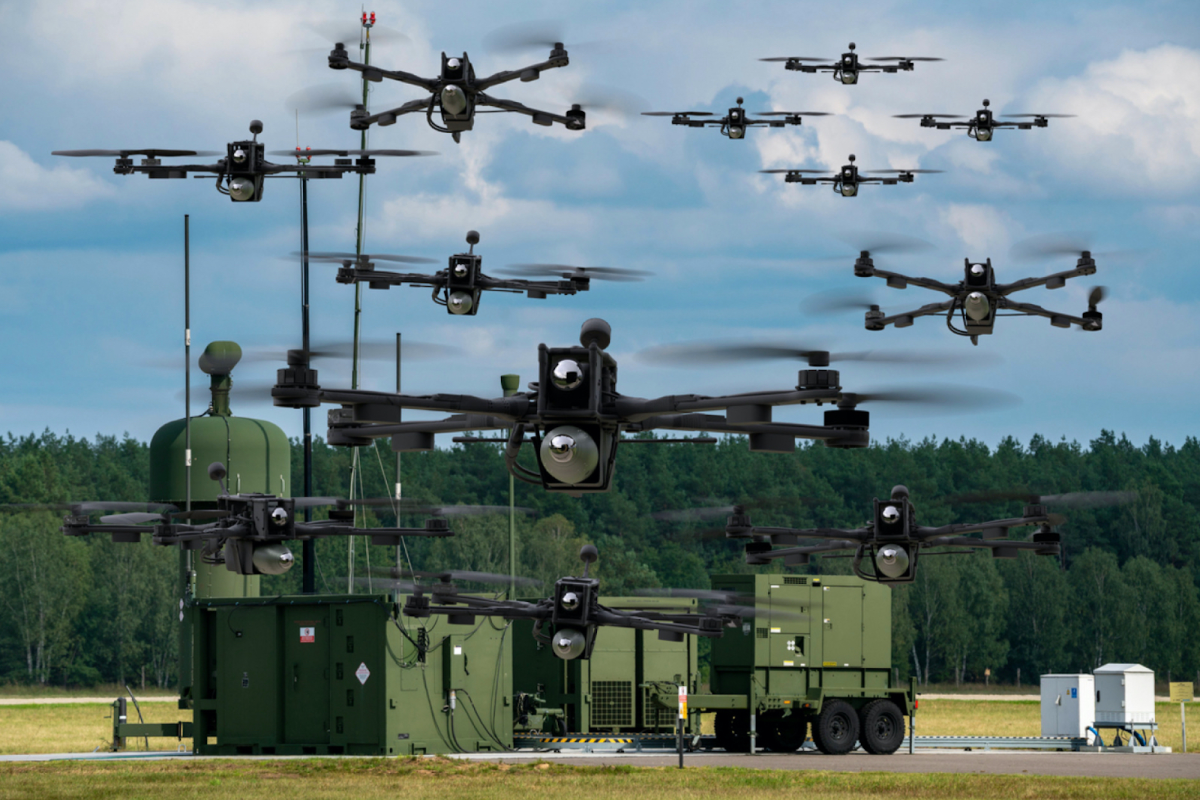
The battlefield of the future is taking shape in the skies, with drones playing an increasingly central role in modern warfare. From reconnaissance and surveillance to offensive strikes and even disrupting critical infrastructure, drones have transformed the way conflict is waged. While many countries have embraced this technology, China’s recent struggles in defending against drone swarms highlight the complexities and challenges posed by this new form of aerial warfare.
China’s Drone Defense Dilemma
During recent training exercises, the People’s Liberation Army (PLA) encountered a significant hurdle in effectively countering drone swarms. Reports from Chinese state media revealed a startling 40% hit rate when attempting to shoot down these aerial adversaries. This revelation has prompted officials to prioritize improving their drone defense capabilities, recognizing the growing threat posed by these agile and adaptable weapons.
The PLA’s struggles stem from the unique challenges posed by drone swarms. Their speed, small size, and ability to change flight trajectories make them incredibly difficult targets to hit. The sheer volume of drones further compounds this difficulty within a swarm, overwhelming traditional air defense systems designed for larger, more predictable aircraft.
A Technological Arms Race
However, the PLA’s recent struggles suggest that their offensive capabilities may be outpacing their defensive ones. As countries like China continue to develop advanced drone technologies, the need for effective countermeasures becomes paramount.
Beyond the Hardware: Tactics and Strategy
The solution to effectively countering drone swarms lies in advanced hardware and developing sophisticated tactics and strategies. This includes:
- Electronic Jamming: Disrupting drone communication and navigation systems through electronic jamming can effectively disable or disrupt a swarm’s operations.
- Laser Weapons: Precision laser weapons offer a potential solution for rapidly neutralizing individual drones within a swarm.
- Adaptive Defense Systems: The development of AI-powered systems that can track and target multiple drones simultaneously is crucial to counter the unpredictable nature of swarms.
- Combined Arms Approach: Integrating traditional air defense systems with advanced counter-drone technologies creates a layered defense capable of tackling diverse drone threats.
The Future of Drone Warfare: A Global Challenge
The challenges posed by drone swarms are not unique to China. The United States, too, faces a similar dilemma, lacking comprehensive systems capable of effectively tracking and neutralizing multiple drones simultaneously. This vulnerability highlights the need for international cooperation and information sharing in developing effective countermeasures.
The ongoing conflict in Ukraine demonstrates the growing role of drones in modern warfare. Ukraine’s use of drones for both offensive and defensive operations, including the targeting of Russian infrastructure and naval vessels, has significantly altered the battlefield landscape.
As drone technology evolves, the global community must proactively address its challenges. This includes developing defense systems, fostering international cooperation, and establishing clear ethical guidelines for using these powerful and potentially destabilizing weapons. The future of warfare hinges on how effectively we navigate the complex landscape of drone technology, ensuring its responsible and ethical application.
